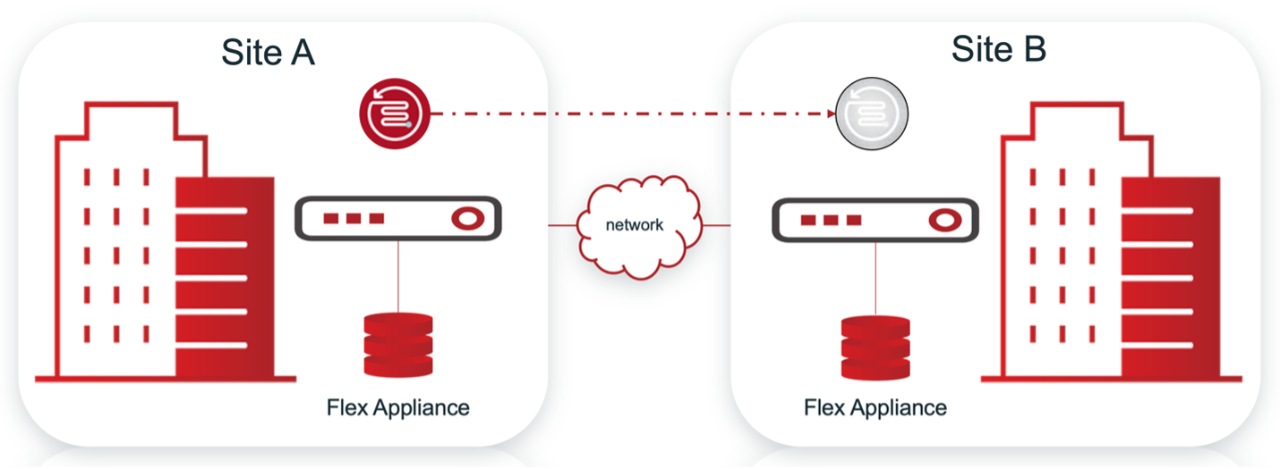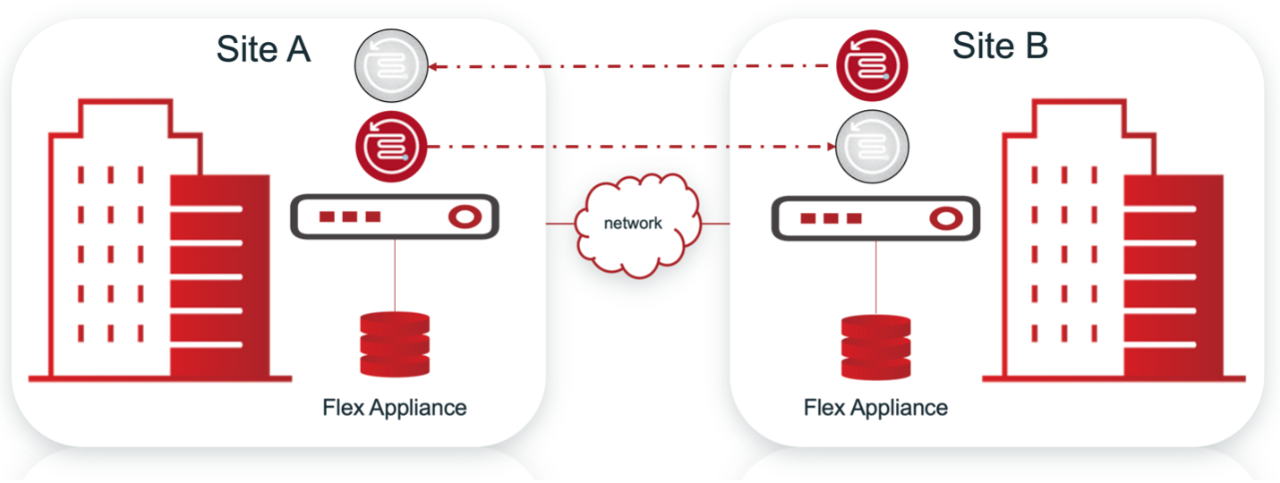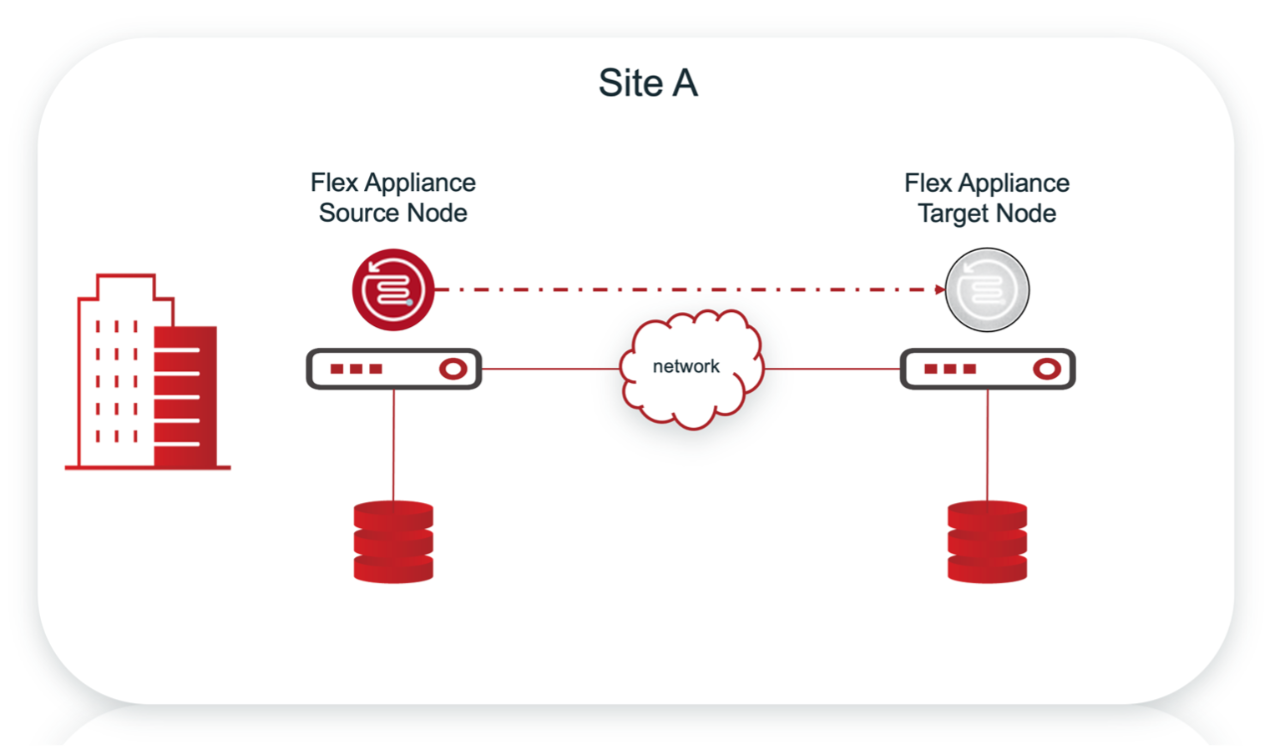Taking Advantage of Primary Server Availability on NetBackup Flex Appliances

Primary Server Availability
Primary server availability is a new, exciting feature introduced with the release of Flex 4.0 operating environment for NetBackup Flex appliances. With primary server availability backup administrators asynchronously replicate the NetBackup primary servers between any two Flex appliances. The replicated instance of the primary server (replica) can be used in disaster recovery situations therefore increasing the data protection environment resilience.
In addition to replication, the primary server availability feature also allows for replication role change. With the role-changing facility the replication target primary server can be easily promoted to become the replication source. The ability to quickly change the replication role also exposes additional advantages for the Flex appliance administrators such as minimized downtime during maintenance, data center and appliance migration, and troubleshooting activities. Moreover, primary server availability ensures consistent replication source and replica configuration, uniform NetBackup version, and can even be used as an alerting tool for site monitoring.
Let us examine in greater detail the benefits provided by the primary server availability.
Disaster Recovery
Disaster recovery is the principal purpose for the primary server availability deployment. When the site with the active NetBackup primary server is compromised, the replicated instance of that server (replica) can be started on the surviving site for the data protection activities to continue.
Here are some possible deployment scenarios:
- Two-site deployment
Typical configuration for disaster recovery with two Flex appliances located at different sites. In the scenario shown in Figure 1, the primary server on site A is replicated to the disaster recovery site B. See Figure 1.

Figure 1. Two-site deployment
- Two-site deployment with bidirectional replication
Primary server availability supports replication of more than one primary server. It is also possible for the replication to be bi-directional. The primary server on site A is replicated to site B and another primary server on site B is also replicated to site A. This deployment results in each site simultaneously acting as production and disaster recovery. See Figure 2.

Figure 2. Two-site bidirectional deployment
- Two site deployments with Flex HA
Primary server resilience may be increased by combining Flex HA (High Availability - Flex appliance with two compute nodes) with primary server availability. The resulting environment guards against software (NetBackup services) and hardware (appliance compute node) malfunctions as well as entire appliance or data center failures. Replication from Flex HA appliance to another Flex HA appliance is also supported. See Figure 3

Figure 3. Two-site replication with Flex HA
- Single-site deployment
The primary server deployment is not limited only to the two-site disaster recovery, but it can be implemented on appliances residing in the same data center or even in the same rack simply to increase the NetBackup primary server availability. See Figure 4.

Figure 4. Single site replication
Replication Role Change
Replication role changing is a simple, Web UI-based action consisting of stopping the NetBackup primary server instance and executing the actual role change to start that instance again on another appliance. This operation can be utilized to perform various, typical data center and appliance-related tasks such as:
- Hardware maintenance
For scheduled hardware maintenance, the NetBackup primary server can be started on another appliance minimizing the required downtime.
- Appliance upgrade
Replication between two different appliance models1 is supported by primary server availability; role changing allows nearly transparent appliance upgrades and hardware refresh cycles including current and future models.
(Note NetBackup Flex 5150 model is not supported)
- Flex operating environment updates
Changing the active primary server role for the duration of the Flex operating environment update process minimizes the data protection environment downtime.
- Hardware and software troubleshooting
In cases of hardware or software issues, migrating the active primary server can aid in more efficient troubleshooting without impacting the production environment.
- Disaster recovery practices
Ensuring successful disaster recovery necessitates regular rehearsals; replication role-changing facility enables fire drills with minimized production environment changes and impact.
- Data center migrations
For temporary or permanent data center migration, establishing the replication cluster and role changing reduces the complexities of moving the primary server to another data center.
NetBackup Maintenance
Deployment of the primary server availability does not increase the NetBackup administrative burden with maintenance tasks such as storage resizing, patching, upgrading, and add-ons installation. For the replicated primary servers, the stand-by NetBackup primary server is automatically modified to match the replication source configuration.
Different versions of NetBackup on the same Flex appliance are supported.
Configuration Comparison
The active primary server and its replica must have the same configuration, however, in some circumstances, the configuration drift is feasible. The appliance administrators have an option to easily compare configurations of the active and replica instances to determine and rectify, if necessary, the possible configuration drift.
Site Status Monitoring
Flex appliance can monitor itself and send a notification if it detects a problem that needs attention. When the management and replication connection status changes, the appliance will automatically generate alerts. These alerts can serve as an early indicator of possible network and site issues.
Learn More
Primary server availability, an integral part of the Flex 4 operating environment delivers an excellent value to current and future Flex appliance administrators. Not only does this feature increase the resiliency of the data protection environment, but it also simplifies common NetBackup primary server administrative tasks. Multiple primary server availability advantages outlined here prove that Veritas is committed to delivering the best-in-class products. For additional information about the NetBackup appliances, Flex, and primary server availability click here and to see a primary server availability demonstration series visit YouTube Veritas Tech Channel.
